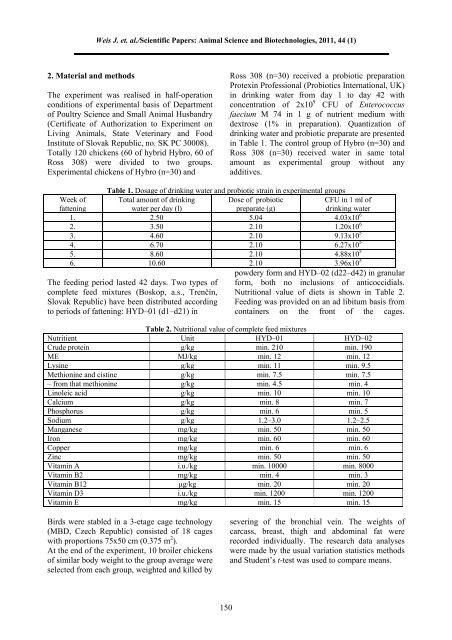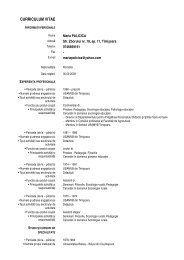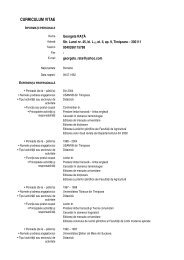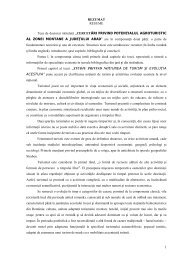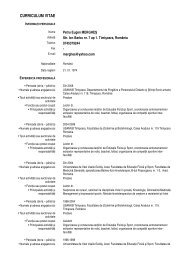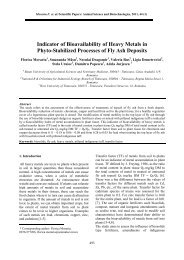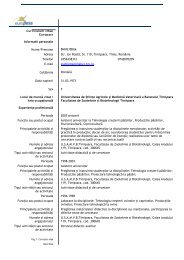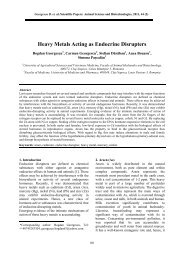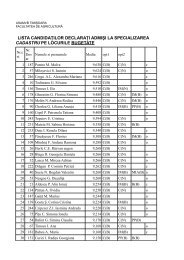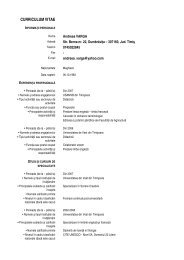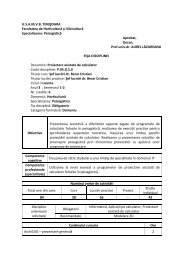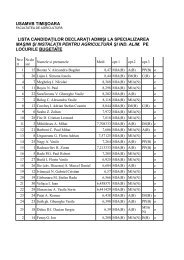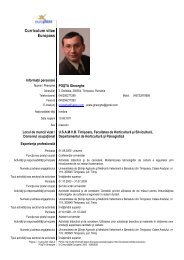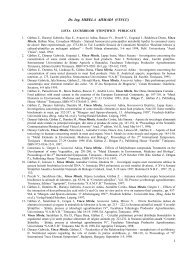Effect of Probiotic Strain Enterococcus faecium M74 ...
Effect of Probiotic Strain Enterococcus faecium M74 ...
Effect of Probiotic Strain Enterococcus faecium M74 ...
Create successful ePaper yourself
Turn your PDF publications into a flip-book with our unique Google optimized e-Paper software.
Weis J. et. al./Scientific Papers: Animal Science and Biotechnologies, 2011, 44 (1)2. Material and methodsThe experiment was realised in half-operationconditions <strong>of</strong> experimental basis <strong>of</strong> Department<strong>of</strong> Poultry Science and Small Animal Husbandry(Certificate <strong>of</strong> Authorization to Experiment onLiving Animals, State Veterinary and FoodInstitute <strong>of</strong> Slovak Republic, no. SK PC 30008).Totally 120 chickens (60 <strong>of</strong> hybrid Hybro, 60 <strong>of</strong>Ross 308) were divided to two groups.Experimental chickens <strong>of</strong> Hybro (n=30) andRoss 308 (n=30) received a probiotic preparationProtexin Pr<strong>of</strong>essional (<strong>Probiotic</strong>s International, UK)in drinking water from day 1 to day 42 withconcentration <strong>of</strong> 2x10 9 CFU <strong>of</strong> <strong>Enterococcus</strong><strong>faecium</strong> M 74 in 1 g <strong>of</strong> nutrient medium withdextrose (1% in preparation). Quantization <strong>of</strong>drinking water and probiotic preparate are presentedin Table 1. The control group <strong>of</strong> Hybro (n=30) andRoss 308 (n=30) received water in same totalamount as experimental group without anyadditives.Table 1. Dosage <strong>of</strong> drinking water and probiotic strain in experimental groupsWeek <strong>of</strong>fatteningTotal amount <strong>of</strong> drinkingwater per day (l)Dose <strong>of</strong> probioticpreparate (g)CFU in 1 ml <strong>of</strong>drinking water1. 2.50 5.04 4.03x10 62. 3.50 2.10 1.20x10 63. 4.60 2.10 9.13x10 54. 6.70 2.10 6.27x10 55. 8.60 2.10 4.88x10 56. 10.60 2.10 3.96x10 5The feeding period lasted 42 days. Two types <strong>of</strong>complete feed mixtures (Boskop, a.s., Trenčín,Slovak Republic) have been distributed accordingto periods <strong>of</strong> fattening: HYD–01 (d1–d21) inpowdery form and HYD–02 (d22–d42) in granularform, both no inclusions <strong>of</strong> anticoccidials.Nutritional value <strong>of</strong> diets is shown in Table 2.Feeding was provided on an ad libitum basis fromcontainers on the front <strong>of</strong> the cages.Table 2. Nutritional value <strong>of</strong> complete feed mixturesNutritient Unit HYD–01 HYD–02Crude protein g/kg min. 210 min. 190ME MJ/kg min. 12 min. 12Lysine g/kg min. 11 min. 9.5Methionine and cistine g/kg min. 7.5 min. 7.5– from that methionine g/kg min. 4.5 min. 4Linoleic acid g/kg min. 10 min. 10Calcium g/kg min. 8 min. 7Phosphorus g/kg min. 6 min. 5Sodium g/kg 1.2–3.0 1.2–2.5Manganese mg/kg min. 50 min. 50Iron mg/kg min. 60 min. 60Copper mg/kg min. 6 min. 6Zinc mg/kg min. 50 min. 50Vitamin A i.u./kg min. 10000 min. 8000Vitamin B2 mg/kg min. 4 min. 3Vitamin B12 μg/kg min. 20 min. 20Vitamin D3 i.u./kg min. 1200 min. 1200Vitamin E mg/kg min. 15 min. 15Birds were stabled in a 3-etage cage technology(MBD, Czech Republic) consisted <strong>of</strong> 18 cageswith proportions 75x50 cm (0.375 m 2 ).At the end <strong>of</strong> the experiment, 10 broiler chickens<strong>of</strong> similar body weight to the group average wereselected from each group, weighted and killed bysevering <strong>of</strong> the bronchial vein. The weights <strong>of</strong>carcass, breast, thigh and abdominal fat wererecorded individually. The research data analyseswere made by the usual variation statistics methodsand Student’s t-test was used to compare means.150


